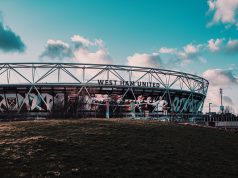West Ham’s move from Upton Park in 2016 has not exactly gone the way everyone expected it to.
The word from club owners David Gold and David Sullivan at the time was that the club was moving from its spiritual home for something bigger. Something better. Something that would catapult the club into the next level.
But while London Stadium is indeed bigger than Upton Park, the other assumptions (or promises) are yet to bear any fruit.
Since the move, West Ham have not finished above 10th in the Premier League and are currently fighting against relegation for the third time in four seasons since 2015/2016. The success just hasn’t followed suit, and fans are quite clearly unhappy with how the whole thing has played out.
Of course, it’s very rare for a club to move stadiums and enjoy instant success, but no one envisaged how catastrophic the move would be for the club’s ambition to move forward and its reputation both on and off the pitch.
And now the board are under increasing pressure to pay the ultimate price for their failings and sell the club. They had visions of being the men who saved West Ham and made the club great, but instead, all they appear to have done is completely change the course of its history, and all for the wrong reasons.
Aside from London Stadium and everything that goes with it, one of the biggest criticisms aimed at West Ham’s owners in recent months is the lack of investment in the first team’s training facilities. Every club should have suitable sports facilities to represent the level at which they’re competing, but at the moment there are some clubs in League Two who have better training facilities than West Ham.
Rush Green just is series of portacabins and a small building for the changing rooms, gym and canteen. The pitches are believed to be one of the key reasons behind first-team players picking up several injuries in training. Put simply, it is a training ground that even some of the smallest clubs in the country would be eager to invest heavily if it was theirs.
Instead, West Ham’s owners reacted to this criticism with claims they had invested over £20m in the training facilities. To put this into perspective, Manchester City’s new training campus cost around £200m and Tottenham, whose training facilities are widely regarded as the best in world football, cost just £30m. Yet West Ham spent £20m and still have portacabins. It just doesn’t make sense.
So if West Ham are to make the stadium move work and if they’re to fulfil the promises made to fans, then they need to invest a lot more than that on ensuring its players have the very best facilities available to them on a daily basis, as well as ensuring the stadium receives a number of key changes to make it feel more like home.
There’s a long road ahead before this is done, but if the owners are to save face and win back lost support from the club’s most loyal fans, they’re going to need to do a lot more with their money.







